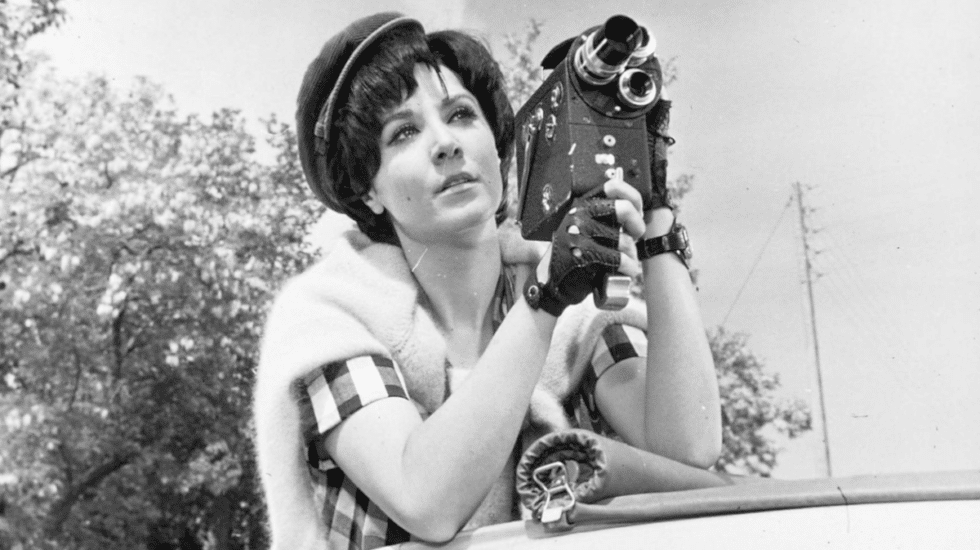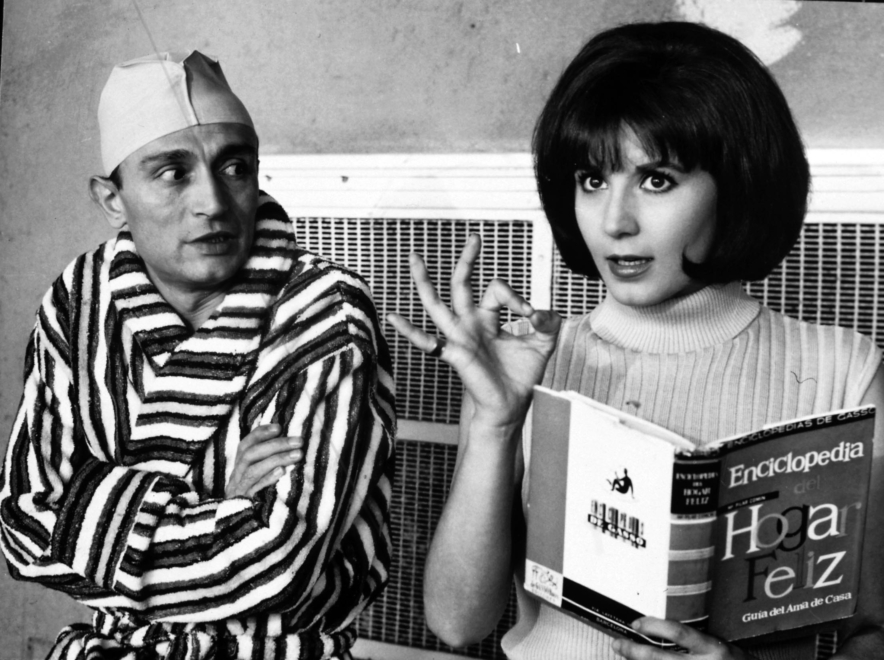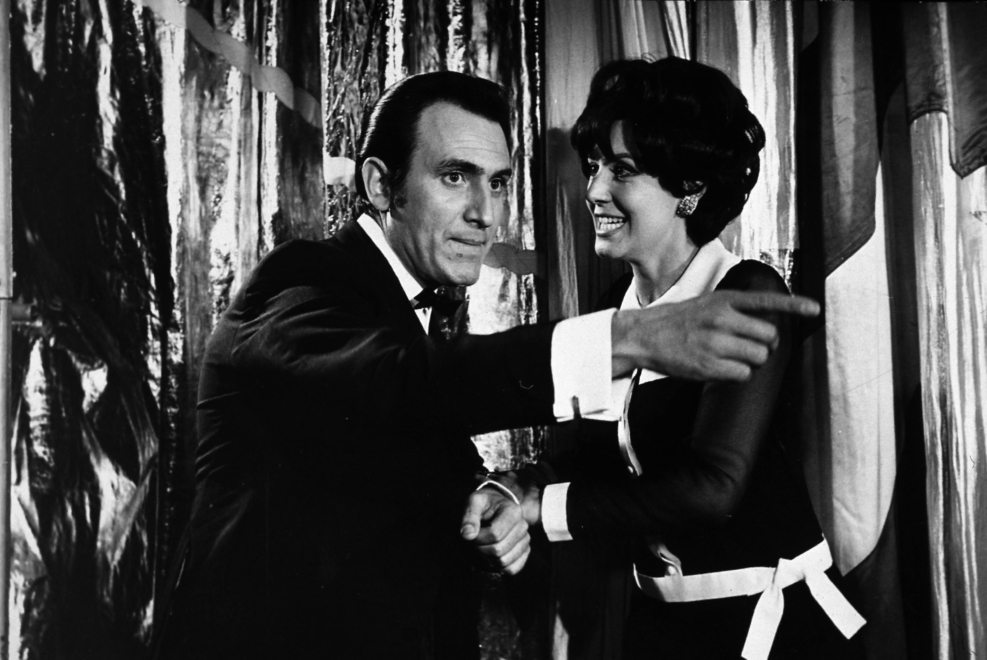

Concha Velasco in a scene from the 1968 film Almost Public Relations.
Conchita wasn’t Concha until Franco died. He first appeared in this capacity in the 1976 film. Pre-release. Directed by Roberto Bodegas and produced by Jose Luis Dibildos, it stars her as a home-based bookseller who occasionally engages in prostitution to supplement her income, and who is paired with a criminal played by popular singer-songwriter Patsy Andion.
By that time, Concha Velasco had already surpassed the track record of often unfairly insulted Spanish, after her successful series of films paired with Tony LeBlanc and Manolo Escobar.. With them Research 1 on TVE with Rosalia de Bringas in the film version Torment or bale Pum, pum, pum… fire!Both times, on the orders of Pedro, Olea achieved the status of a respectable actress, which in fact she always had, because acting in a light comedy is a very serious matter. But Concha managed to leave this affectionate and young Conchita only in the mid-70s, when she was about to turn 40 years old and Franco’s regime was extinguished.
spring bride
She made her debut twenty years earlier, when she was still a teenager, playing a dishwasher in The Taming of the Shrew (1956), where he had the honor of throwing a jug of water into Carmen Seville. It didn’t take long for this young vice president of Celia Gamez’s company to stand out. Even before she turned 20, she revealed herself as one of Red Cross girls (1958). She was the humblest girl—and the one who raised the most on Flag Day—of the quartet of Katya Loritz, Mabel Carr and Luz Marquez. A German, an Argentine, a woman from Madrid and one from Valladolid are walking along Gran Via. and sang the modern paso doble Augusto Alghero while riding in a convertible—unusual for the time except for North Americans on a mission in Spain—on the Paseo de Recoletos. She was the only one of the four actresses to lend her voice to the song. Because Concha sang, danced, acted and presented, and she did everything well.
The modest but thriving Spanish cinema immediately fell in love with the very young and versatile actress. Over the next decade alone, Concha Velasco appeared in more than 30 films, a dozen of them with her first regular co-star, Tony LeBlanc. He was born According to scholar Carlos Aguilar, she was destined to become “the most popular and flexible national star.”
One year later Red Cross girlsthe writing tandem formed by Pedro Maso and Rafael J. Salvia thought about her again to Valentine’s Day (Fernando Palacios, 1959), a film that reprized the tone and plot of the previous film – the romantic adventures of four couples over the course of one day – and which also used Alghero’s song as an added attraction and popular hook. . Conchita repeated her romance with Leblanc, blessed by the handsome Valentin played by Jorge Rigo and who Having launched his arrows of love, he ascended to heaven in the elevator of the Madrid Tower.
Rigo, “an Argentinian, funny and charming,” gave Velasco advice that the actress recalled years later in a conversation with journalist Andres Arconada, who collected it in his book. Concha Velasco, diary of an actress (2001). “He told me in his special accent: “Look, Conchita, You are dressed very nicely by your mother, but you are already a star, you will have to wear different clothes.’. “I ran to tell my mother that I couldn’t keep wearing her dresses, that from a distance you could see they were made of sheer fabric and a little bit of sofa.”
Her next work, a classic of Spanish comedy, will become the basis of the image of Concha Velasco and the condition of the aspiring star that Rigo warned about. IN ScammersDirector Pedro Lazaga and producer Dibildos, Velasco and Laura Valenzuela (the producer’s future wife) redeem their boyfriends – Tony Leblanc and Antonio Ozores – two con artists who, thanks to love, end up leaving behind charming low-grade intense crimes that they commit on the streets Madrid. In the history of Spanish cinema there is an unforgettable scam with a stamp, which both perform at the doors of the Atocha station.
Ye-ye girl from Saenz de Heredia
Concha Velasco just starred in her first film as the leading lady. Catalina Trap (1961), again under the direction of Lazaga, when Jose Luis Garcia Sanchezthen a film student, and who eventually directed her debut feature film, Cruel lovehe saw her one afternoon in the Café Gijón, coming down the stairs of his crypt restaurant.”with those wonderful legs and high heels“Very serious, looking straight ahead, always straight ahead, she could not look around, because on both sides there were men devouring her with their eyes, and she was in danger of being killed by Saenz de Heredia, who was jealous. almost Sicilian,” he says. Marcos Ordonez in his book Ronda del Gijon.

Saenz de Heredia, Director Racea film written by Franco under the pseudonym Jaime de Andrade, and a masterpiece like Radio stories, took Velasco under his protection. They had an eleven-year relationship and made several films together. First unsuccessful Pardonadaptation of the story by Emilia Pardo Bazan and below. Paloma Festival (1963), inspired by the zarzuela of the same name. Next, TV Stories (1965) Velasco plays Katie, a young woman who dreams of success in the world of singing. She is a “ye-ye girl” who will forever be tied to her name.
Velasco, whose previous roles cultivated the image of a “modern but honest girl, friendly and not awkward, naughty, mischievous, with common sense and respect for order, that is, the ideal girlfriend”, according to director and writer Diego Galan, came to represent a new generation of Spanish women who wore trousers and miniskirts and did not accept being trapped by the narrow boundaries that limited the lives of their mothers and grandmothers. A woman who wanted to live , work and even study, without abandoning family life and without directly challenging the order and decency of the society of the time.
This tension between tradition and modernity is a common feature of the series of films in which Velasco stars alongside Manolo Escobar under the direction of Saenz de Heredia:But what a country we live in! (1967), Almost PR (1968), Trial skirt (1969), In one place in La Manga (1970) and You owe me a dead man (1971) –. Innovations and contradictions of Spanish developmentalism They are reflected in those comedies in which Escobar personified traditional values and Velasco a joyful but controlled desire for emancipation. And all this on the orders of a director who was later criticized for his unwavering commitment to the regime.

Like Landa, López Vázquez, or Sacristán, Velasco emerged from the comic world prepared to tackle the interpretative problems that the cinema of the 70s and 80s was about to pose to her. In 1982, he joined the star cast of the film Hive. And in 1984, he won all the awards with the stunning Teresa de Jesus, which he wrote for Josephine Molina’s television series. Conchita was now definitely Concha.
But the seriousness of the roles serious and ambitious in theater, film and TV series, she never buried the light-hearted register that made her popular in the 60s. Viewers who saw Velasco present variety shows on television in the 80s and 90s recalled programs such as Live the show, Fascinated by lifeeven Surprise Surprise!– by her magnificent smile and wonderful legs, I recognized Conchita and admired her just like the actress Concha. Sometimes it was food work to pay off debts to the treasury or her husband’s troubles, which she herself voiced in the media. But it was invisible, and deep down it didn’t matter. Velasco’s talent, natural grace and presence dispelled any objections. Even politics. It would be a small thing to mention Saenz de Heredia or the visits to Pardo when he decided to support the PSOE. Conchita mutated into Concha after Franco’s death, but remained little Conchita. A bit like the country that applauded her, which has changed completely but remains the same. And perhaps in this deep identification lies partly the secret of his success and the key to the affection that he inspired during his life and today in his death.
Source: El Independiente